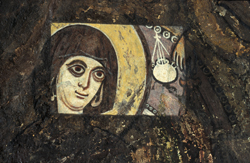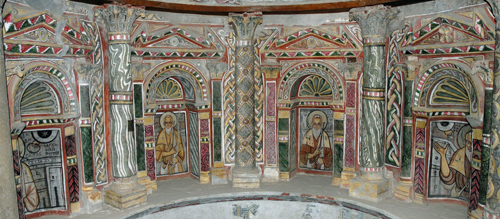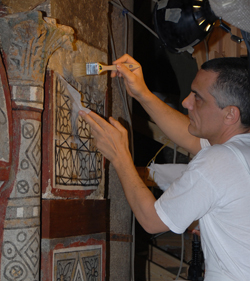Art historian returns ancient Egyptian church to living color
|
||||||
|
Almost half Art historians have long known that church interiors |
 Photo courtesy Elizabeth S. Bolman
Elizabeth Bolman
|
|||||
|
"That's why I was stunned when The rebirth of the Red Monastery's wall paintings |
||||||
 Photo by Elizabeth S. Bolman
The Virgin Mary peeks out from a partially conserved painting; soot and varnish cover the surrounding area.
|
"The The bustle |
||||||||||
|
|||||||||||

